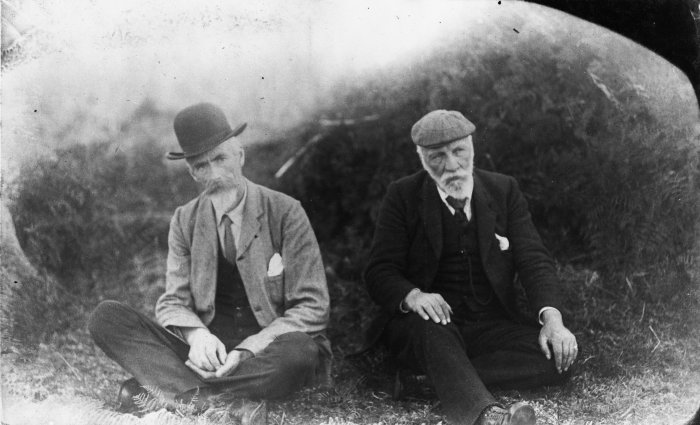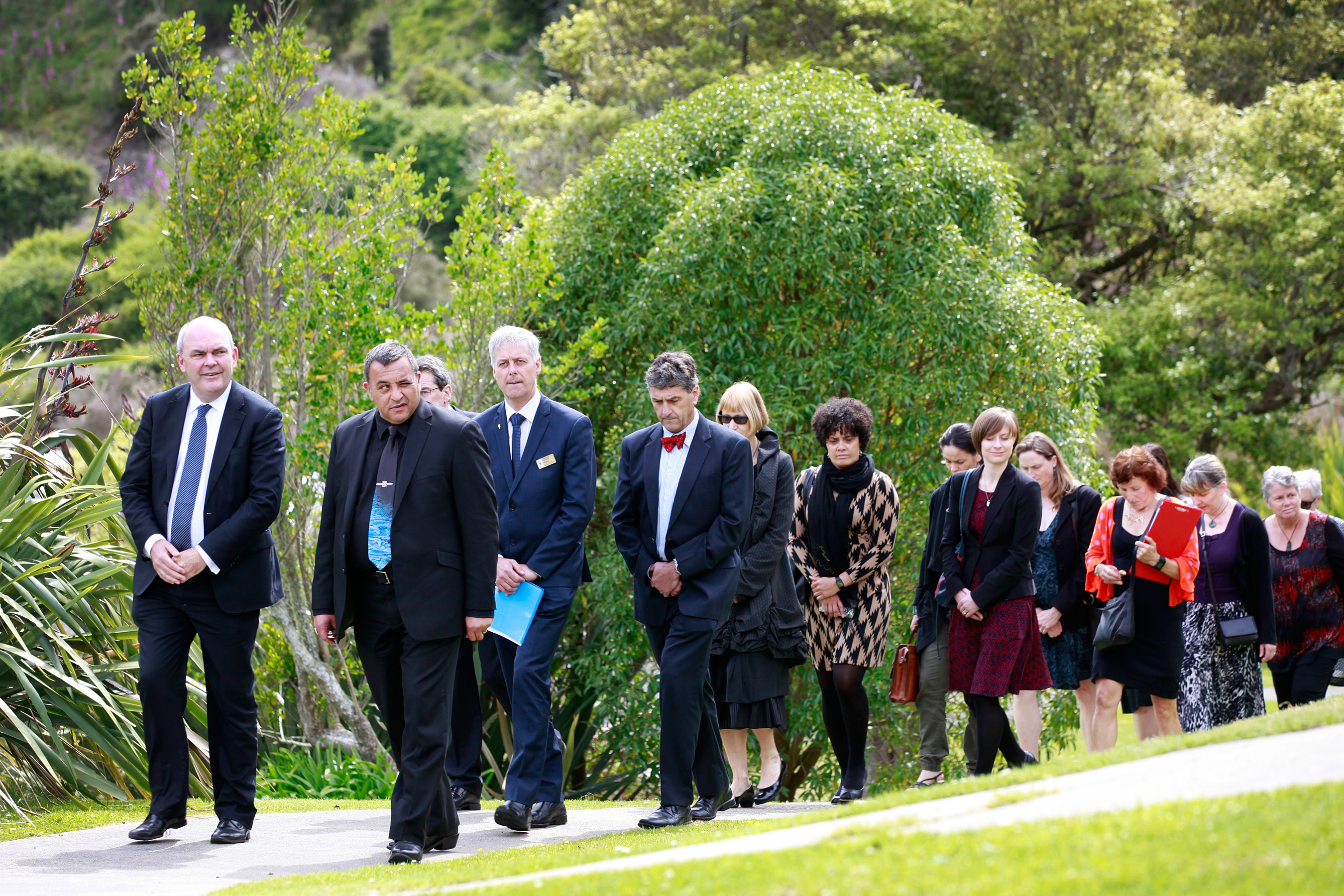|
Annemarie Gillies
Annemarie Gillies is a New Zealand Māori academic, and is Professor of Māori Research at the Eastern Institute of Technology in Hawke's Bay. She was formerly a professor at Massey University. Academic career Gillies is Māori, and affiliates to Ngāti Kahungunu, Ngāti Awa, Te Whanau-a-Apanui and Te Arawa iwi. She worked in the freezing works at Whakatu until they were closed in 1986, and then studied business administration at the Eastern Institute of Technology (EIT). She worked first in accounts, and later completed a National Certificate of Business Studies. Gillies went on to gain a Bachelor of Business Studies majoring in Accountancy from Massey University. She then managed the Te Pūmanawa Hauora Māori Health Research Programme at Massey. In 2006, Gillies completed a PhD titled ''Kia taupunga te ngā kau Māori: anchoring Māori health workforce potential'' at Massey University, supervised by Mason Durie. Gillies was Director of Te Au Rangahau, the Māori Business R ... [...More Info...] [...Related Items...] OR: [Wikipedia] [Google] [Baidu] |
Massey University
Massey University () is a Public university, public research university in New Zealand that provides internal and distance education. The university has campuses in Auckland, Palmerston North, and Wellington. Data from Universities New Zealand shows that in 2024 the university had approximately 26,505 students enrolled, making it the country's second-largest university. Research is undertaken on all three campuses and people from over 130 countries study at the university. According to the university's annual report, in 2023, around 17.8% of students were based at the Auckland campus, 19.2% at the Manawatū (Palmerston North) campus, and 13.9% at the Wellington campus. Distance learning accounted for 45.4% of the student body, while the remaining 3.7% studied at other locations. History University of New Zealand The New Zealand Agricultural College Act of 1926 laid the foundation for the sixth college of the University of New Zealand (UNZ). It allowed for the amalgamation of t ... [...More Info...] [...Related Items...] OR: [Wikipedia] [Google] [Baidu] |
Hapū
In Māori language, Māori and New Zealand English, a ' ("subtribe", or "clan") functions as "the basic political unit within Māori society". A Māori person can belong to or have links to many hapū. Historically, each hapū had its own chief and normally operated independently of its iwi (tribe). Etymology The word literally means "pregnant", and its usage in a socio-political context is a metaphor for the genealogical connection that unites hapū members. Similarly, the Māori word for land, , can also mean "placenta", metaphorically indicating the connection between people and land, and the Māori word for tribe, iwi, can also mean "bones", indicating a link to ancestors. Definition As named divisions of (tribes), hapū membership is determined by genealogical descent; a hapū consists of a number of (extended family) groups. The Māori scholar Sidney Moko Mead, Hirini Moko Mead states the double meanings of the word hapū emphasise the importance of being born into ... [...More Info...] [...Related Items...] OR: [Wikipedia] [Google] [Baidu] |
Year Of Birth Missing (living People)
A year is a unit of time based on how long it takes the Earth to orbit the Sun. In scientific use, the tropical year (approximately 365 solar days, 5 hours, 48 minutes, 45 seconds) and the sidereal year (about 20 minutes longer) are more exact. The modern calendar year, as reckoned according to the Gregorian calendar, approximates the tropical year by using a system of leap years. The term 'year' is also used to indicate other periods of roughly similar duration, such as the lunar year (a roughly 354-day cycle of twelve of the Moon's phasessee lunar calendar), as well as periods loosely associated with the calendar or astronomical year, such as the seasonal year, the fiscal year, the academic year, etc. Due to the Earth's axial tilt, the course of a year sees the passing of the seasons, marked by changes in weather, the hours of daylight, and, consequently, vegetation and soil fertility. In temperate and subpolar regions around the planet, four seasons a ... [...More Info...] [...Related Items...] OR: [Wikipedia] [Google] [Baidu] |
Ngāti Awa People
Iwi () are the largest social units in New Zealand Māori society. In Māori, roughly means or , and is often translated as "tribe". The word is both singular and plural in the Māori language, and is typically pluralised as such in English. groups trace their ancestry to the original Polynesian migrants who, according to tradition, arrived from Hawaiki. Some cluster into larger groupings that are based on (genealogical tradition) and known as (literally , with reference to the original migration voyages). These super-groupings are generally symbolic rather than logistical. In pre-European times, most Māori were allied to relatively small groups in the form of () and (). Each contains a number of ; among the of the Ngāti Whātua iwi, for example, are Te Uri-o-Hau, Te Roroa, Te Taoū, and Ngāti Whātua-o-Ōrākei. Māori use the word ''rohe'' for the territory or boundaries of iwi. In modern-day New Zealand, can exercise significant political power in the manageme ... [...More Info...] [...Related Items...] OR: [Wikipedia] [Google] [Baidu] |
Academic Staff Of Massey University
An academy (Attic Greek: Ἀκαδήμεια; Koine Greek Ἀκαδημία) is an institution of tertiary education. The name traces back to Plato's school of philosophy, founded approximately 386 BC at Akademia, a sanctuary of Athena, the goddess of wisdom and skill, north of Athens, Greece. The Royal Spanish Academy defines academy as scientific, literary or artistic society established with public authority and as a teaching establishment, public or private, of a professional, artistic, technical or simply practical nature. Etymology The word comes from the ''Academy'' in ancient Greece, which derives from the Athenian hero, '' Akademos''. Outside the city walls of Athens, the gymnasium was made famous by Plato as a center of learning. The sacred space, dedicated to the goddess of wisdom, Athena, had formerly been an olive grove, hence the expression "the groves of Academe". In these gardens, the philosopher Plato conversed with followers. Plato developed his sessio ... [...More Info...] [...Related Items...] OR: [Wikipedia] [Google] [Baidu] |
New Zealand Women Academics
New or NEW may refer to: Music * New, singer of K-pop group The Boyz * ''New'' (album), by Paul McCartney, 2013 ** "New" (Paul McCartney song), 2013 * ''New'' (EP), by Regurgitator, 1995 * "New" (Daya song), 2017 * "New" (No Doubt song), 1999 * "new", a song by Loona from the 2017 single album '' Yves'' * "The New", a song by Interpol from the 2002 album ''Turn On the Bright Lights'' Transportation * Lakefront Airport, New Orleans, U.S., IATA airport code NEW * Newcraighall railway station, Scotland, station code NEW Other uses * ''New'' (film), a 2004 Tamil movie * New (surname), an English family name * NEW (TV station), in Australia * new and delete (C++), in the computer programming language * Net economic welfare, a proposed macroeconomic indicator * Net explosive weight, also known as net explosive quantity * Network of enlightened Women, an American organization * Newar language, ISO 639-2/3 language code new * Next Entertainment World, a South Korean media compan ... [...More Info...] [...Related Items...] OR: [Wikipedia] [Google] [Baidu] |
Aotearoa Research Ethics Committee
''Aotearoa'' () is the Māori name for New Zealand. The name was originally used by Māori in reference only to the North Island, with the whole country being referred to as ''Aotearoa me Te Waipounamu'' – where ''Te Ika-a-Māui'' means North Island, and ''Te Waipounamu'' means South Island. In the pre-European era, Māori did not have a collective name for the two islands. Several meanings for Aotearoa have been proposed; the most popular translation usually given is "land of the long white cloud", or variations thereof. This refers to the cloud formations which are believed to have helped early Polynesian navigators find the country in Māori oral tradition. Beginning in the late 20th century, ''Aotearoa'' has become widespread in the bilingual naming of national organisations and institutions. Since the 1990s, it has been customary for particular parties to sing the New Zealand national anthem, "God Defend New Zealand" (or "Aotearoa"), in both Māori and English, which ... [...More Info...] [...Related Items...] OR: [Wikipedia] [Google] [Baidu] |
National Science Challenges
The National Science Challenges (NSC) were 11 ten-year collaborative science programmes in New Zealand, established in 2014 and ending mid-2024. They were "cross-disciplinary, mission-led programmes designed to tackle New Zealand's biggest science-based challenges", funded through the Ministry of Business, Innovation and Employment. Establishment The NSC initiative was developed over 2012–13 by the New Zealand government's Ministry of Business, Innovation and Employment (MBIE) as a restructure of national scientific research funding. Established in advance of the 2014 general election, the Challenges were funded with $680.8 million over ten years, broken into two five-year phases. The science challenges they address were intended to be "the most important national-scale issues facing New Zealand". The challenges were collaborative and multi-disciplinary, creating new teams of researchers drawn from universities and other research institutions, iwi, Crown Research Institutes, ... [...More Info...] [...Related Items...] OR: [Wikipedia] [Google] [Baidu] |




